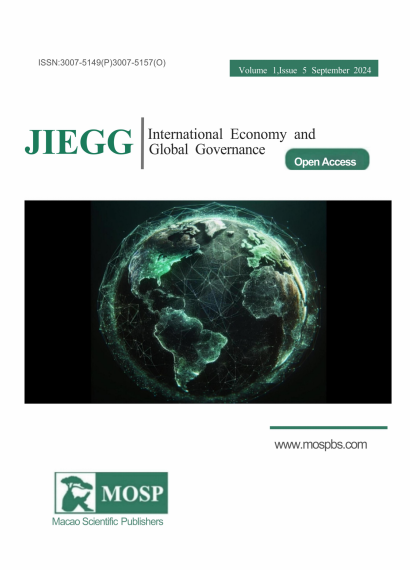-
Janeba, E. (2007). International trade and consumption network externalities. European Economic Review, 51(4), 781-803.
-
Rauch, J., Trindade, V. (2009). Neckties in the tropics: a model of international trade and cultural diversity. Canadian Journal of Economics, 42(3), 809-843.
-
Maystre, N., Olivier, J., Thoenig, M., Verdier, T. (2014). Product-based cultural change: Is the village global? Journal of International Economics, 92(2), 212-230.
-
Levy, S. (1959). Symbols for sale. Harvard business review.
-
Sirgy, M (1982). Self-concept in consumer behavior: A critical review. Journal of consumer research, 9(3): 287-300.
-
Schulze, G. (1999). International trade in art. Journal of Cultural Economics, 23, 109–136.
-
Marvasti, A., Canterbery, E., (2005). Cultural and other barriers to motion pictures trade. Economic Inquiry, 43, 39–54.
-
Chan-Olmsted, S., Cha, J., Oba, G., (2008). An examination of the host country factors affecting the export of US video media goods. Journal of Media Economics, 21, 191–216.
-
Liu, A., Lu C., Wang, Z. (2020). The roles of cultural and institutional distance in international trade: Evidence from China's trade with the Belt and Road countries. China Economic Review, 61.
-
Eaton, J., Kortum, S. (2002). Technology, geography, and trade. Econometrica, 70(5), 1741–1779.
-
Melitz, M., Ottaviano, G. (2008). Market size, trade, and productivity. Review of Economic Studies, 75(1), 295–316.
-
Chaney, T. (2008). Distorted gravity: The intensive and extensive margins of international trade. American Economic Review, 98(4), 1707–1721.
-
Disdier, A., Tai, S., Fontagné, L., Mayer, T. (2010). Bilateral trade of cultural goods. Review of World Economics, 145(4), 575–595.
-
Wang, Q., Qin, L. Analysis of Factors Influencing China's Cultural Product Exports. Western Forum, 2015, 25(5): 99-108.
-
Wei, Y., Zhong, X. Consumption Addiction, Cultural Discount, and China's Core Cultural Product Exports. Learning and Practice, 2016(06): 128-134.
-
Jia, X., Lü, L. Analysis of Factors Influencing China's Cultural Trade: A Case Study of Core Cultural Product Exports. Scientia Geographica Sinica, 2017, 37(8): 1145-1150.
-
Lan, T., Lü, W. Research on the Dual Margins and Influencing Factors of the Growth in China's Cultural and Creative Product Exports. International Trade Issues, 2018.
-
Zhao, Y., Shen, Y. An Empirical Study on the Factors Influencing China's Cultural Product Trade and Trade Potential: Based on Cross-Country Panel Data. Industrial Innovation Research, 2020(04): 5-8.
-
Tu, Y. Estimation of China's Cultural Product Trade Flows and Export Potential: An Empirical Analysis Based on the Gravity Model. Enterprise Economy, 2014(03): 106-110.
-
Feng, Q. Growth Drivers and Trade Potential: An Empirical Analysis of Cultural Product Trade between China and Key Countries along the "Belt and Road". Journal of Shaoxing University (Humanities and Social Sciences), 2020, 40(11): 92-100.
-
Fang, Y., Ma, R. The Potential and Influencing Factors of Cultural Trade between China and Countries along the "Belt and Road": An Empirical Study Based on the Stochastic Frontier Gravity Model. World Economic Research, 2018(1): 112-121.
-
Li, S., Deng M., Liu D. Trade Gravity, Social Embeddedness, and Cultural Product Exports: An Empirical Analysis Based on China and Countries along the "Belt and Road". Journal of Guangdong University of Finance & Economics, 2017(4): 32-44.
-
Cui, C., Lü, W. A Study on the Efficiency and Trade Potential of Cultural Product Trade between China and India: Based on the Stochastic Frontier Gravity Model. Proceedings of the Emerging Economies Forum, 2019: 738-750.
-
Wang, L., Huang, F. International Competitiveness and Influencing Factors of Textile Trade between China and the BCIM Countries: Based on the "BCIM" Framework. Price Monthly, 2021(12): 44-51.
-
Chen, F., Lü, M. An Investigation into the Current Situation and Promotion Strategies of China's Cultural Product Exports to Other RCEP Member Countries. Economic Research Reference, 2022(08): 134-144.
-
Cai, Y., Wei, X. An Analysis of Factors Influencing China's Cultural Product Exports to RCEP Partner Countries and Trade Potential: An Empirical Study Based on the Gravity Model. Foreign Trade, 2023(10): 10-14.

